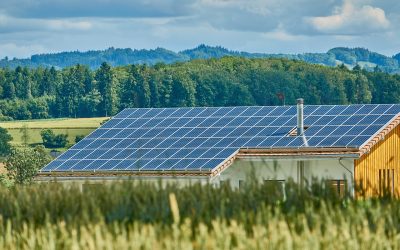Imagine this scenario: you’re in the middle of an important work project, the deadline is looming, and suddenly, the power goes out. Panic starts to set in as you realize you don’t have a backup plan. But what if there was a solution to keep your devices powered and your work uninterrupted during grid outages? In this article, we will explore the concept of backup power and how it can be a game-changer in situations like these. Whether you’re a professional needing uninterrupted power for work or simply want peace of mind during unexpected outages, backup power is the key to staying connected when the grid fails you.
Types of Backup Power Systems
When it comes to backup power systems, there are several options to consider. Each type of system has its own advantages and limitations, so it’s important to understand the differences before making a decision. The four main types of backup power systems are battery backup systems, generator backup systems, solar backup systems, and fuel cell backup systems. Let’s take a closer look at each one.
Battery Backup Systems
Battery backup systems are a popular choice for providing electricity during grid outages. These systems consist of a battery that stores energy and an inverter that converts that energy into usable electricity. There are several types of batteries used in backup systems, including lead-acid batteries, lithium-ion batteries, and nickel-cadmium batteries. The size of the battery is determined by the power requirements of the appliances and devices you want to power during an outage. Installation and maintenance of battery backup systems are relatively simple, and they can be easily integrated with the existing electrical system in your home. One advantage of battery backup systems is their quiet operation, as they do not produce any noise or emissions. However, their limited capacity means that they may not be suitable for prolonged outages.
Generator Backup Systems
Generator backup systems are another popular choice for backup power. These systems use a generator to produce electricity during an outage. Generators can be powered by various fuels, including gasoline, diesel, natural gas, and propane. There are different types of generators available, such as portable generators and standby generators. The size of the generator you need depends on the power requirements of your home or business. Installation and maintenance of generator backup systems require more effort compared to battery backup systems, as generators need to be properly connected to the electrical system and fuel source. One advantage of generator backup systems is their high power capacity, making them suitable for long-duration outages. However, generators can be noisy and produce emissions, so proper ventilation is essential.
Solar Backup Systems
Solar backup systems harness the power of sunlight to provide electricity during grid outages. These systems consist of solar panels that convert sunlight into electricity, which can then be stored in batteries for later use. There are different types of solar backup systems, including grid-tied systems and off-grid systems. The size of the solar panels depends on the power requirements of your home or business, and battery integration allows for storage of excess energy. Net metering is a feature of some solar backup systems, allowing you to sell excess energy back to the grid. Installation and maintenance of solar backup systems require professional assistance to ensure proper placement of the panels and integration with the electrical system. Solar backup systems have the advantage of utilizing a renewable energy source and reducing reliance on the grid. However, they may not be suitable in areas with limited sunlight or during prolonged overcast periods.
Fuel Cell Backup Systems
Fuel cell backup systems use hydrogen or other fuels to produce electricity through an electrochemical process. These systems consist of a fuel cell stack that generates electricity and a fuel source that provides the necessary fuel to the stack. There are different types of fuel cells, including proton exchange membrane fuel cells and solid oxide fuel cells. The size of the fuel cell depends on the power requirements of your home or business. Fuel options vary, including hydrogen, natural gas, and even biogas. Installation and maintenance of fuel cell backup systems require professional assistance, as the process involves complex equipment and safety considerations. Fuel cell backup systems offer the advantage of high energy efficiency and low emissions. However, the availability and cost of fuel can be a limiting factor for some users.
Integration with Grid Power
When considering a backup power system, it’s important to think about how it will integrate with the grid power. Automatic transfer switches are often used to automatically switch from grid power to backup power during an outage. These switches ensure a seamless transition and minimize disruption. Microgrids are another option for integrating backup power systems with the grid. A microgrid is a small-scale power system that can operate independently from the main grid, allowing for reliable power supply during outages. Smart grid systems also play a role in integrating backup power systems, as they enable more efficient management of electricity distribution and facilitate the use of renewable energy sources.
Cost Analysis
Before investing in a backup power system, it’s important to consider the costs involved. The initial investment includes the purchase and installation of the system. The operating costs include maintenance, fuel costs (if applicable), and any additional expenses. It’s also important to calculate the payback period, which is the time it takes for the system to pay for itself through energy savings or other benefits. This analysis will help you understand the financial implications of your backup power system choice and make an informed decision.
Government Regulations
When installing a backup power system, it’s essential to comply with government regulations and obtain any necessary permits and licenses. These regulations ensure the safety and proper operation of the system. Environmental regulations may also apply, especially if your backup power system involves the use of fuel. It’s important to research and understand the specific regulations in your area. Additionally, there may be incentives and rebates available from the government or utility companies to encourage the installation of backup power systems. These incentives can help offset the initial costs and make the system more affordable.
Choosing the Right Backup Power System
To choose the right backup power system, there are several factors to consider. Start by assessing your power needs. Identify the appliances and devices you need to power during an outage and calculate their power requirements. Consider the duration and frequency of outages in your area. Evaluate your budget constraints and determine how much you are willing to invest in a backup power system. Fuel availability is another important factor, as some systems may require access to specific fuels. Finally, consider the maintenance requirements of each system and determine if you have the resources and knowledge to properly maintain it. By analyzing these factors and comparing different backup power system options, you can make an informed decision that meets your specific needs and requirements.










